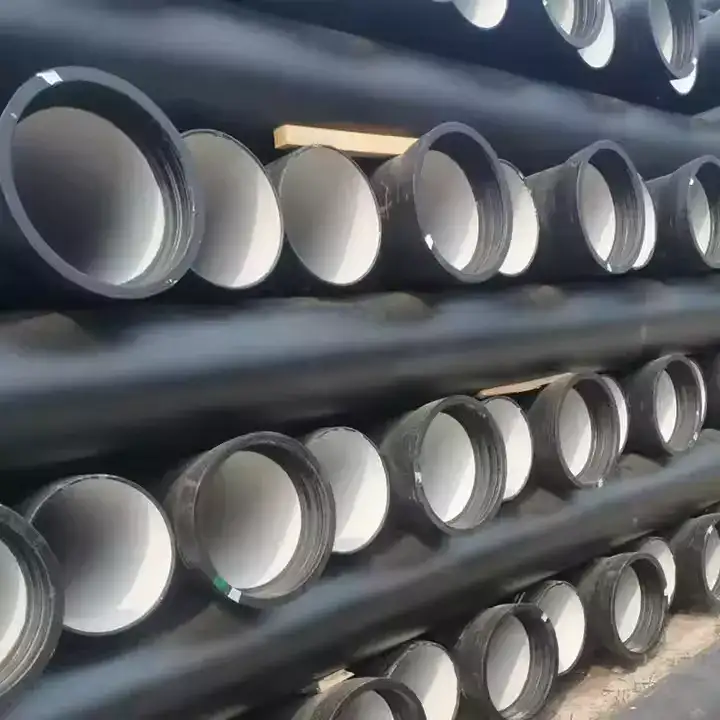Ductile iron pipe is a type of pipe made from ductile cast iron, which is known for its strength and flexibility. It is commonly used in water and wastewater infrastructure due to its durability and resistance to pressure. However, like all metals, ductile iron is susceptible to corrosion under certain conditions.

Corrosion Mechanisms in Ductile Iron Pipe
Corrosion occurs when the metal reacts with environmental elements such as oxygen, water, and soil chemicals. In ductile iron pipes, this can lead to the formation of iron oxides, commonly known as rust. The rate and extent of corrosion depend on factors like soil resistivity, moisture content, and the presence of corrosive agents.
Does Ductile Iron Rust?
Yes, ductile iron can rust. While it is more resistant to corrosion than traditional cast iron, it is not immune. In aggressive environments, such as soils with low resistivity or high moisture content, ductile iron pipes can experience corrosion leading to rust formation.
Corrosion Prevention Methods for Ductile Iron Pipe
1. Polyethylene Encasement
Polyethylene encasement involves wrapping the ductile iron pipe with a layer of polyethylene film. This method acts as a barrier, preventing direct contact between the pipe and the surrounding soil, thereby reducing the risk of corrosion. It is a cost-effective and widely used method for corrosion protection.
2. Zinc Coating
Applying a zinc coating to ductile iron pipes provides sacrificial protection. Zinc corrodes preferentially, protecting the underlying iron from corrosion. This method is particularly effective in moderately corrosive environments.
3. Cement-Mortar Lining
Cement-mortar lining involves applying a layer of cement mortar to the interior surface of the pipe. This lining provides resistance to corrosion caused by the transported fluids and can also improve the hydraulic characteristics of the pipe.
4. Cathodic Protection
Cathodic protection is a technique used to control the corrosion of a metal surface by making it the cathode of an electrochemical cell. This can be achieved through galvanic (sacrificial anode) systems or impressed current systems. While effective, cathodic protection is typically used in highly corrosive environments or where other methods are insufficient.
Industry Standards and Recommendations
ASTM G218-19
The ASTM G218-19 standard provides guidelines for the external corrosion protection of polyethylene-encased ductile iron pipe. It recommends the use of cathodic protection in conjunction with polyethylene encasement to enhance corrosion resistance.
DIPRA Design Decision Model
The Ductile Iron Pipe Research Association (DIPRA) offers a Design Decision Model to assist engineers in determining the appropriate corrosion protection methods based on factors like soil resistivity and environmental conditions.
Frequently Asked Questions (FAQs)
1. Is cathodic protection necessary for all ductile iron pipes?
Cathodic protection is not universally required for all ductile iron pipes. Its necessity depends on environmental factors such as soil resistivity, moisture content, and the presence of corrosive agents. In mildly corrosive environments, methods like polyethylene encasement or zinc coatings may suffice. However, in highly corrosive conditions, cathodic protection provides an added layer of defense.
2. How does cathodic protection work?
Cathodic protection works by converting the ductile iron pipe into the cathode of an electrochemical cell. This is achieved by supplying electrons to the pipe, preventing it from losing electrons and thus inhibiting corrosion. There are two main types of CP systems: galvanic, which uses sacrificial anodes, and impressed current, which uses an external power source.
3. What are the maintenance requirements for cathodic protection systems?
Cathodic protection systems require regular monitoring and maintenance to ensure their effectiveness. This includes checking the voltage and current levels, inspecting anodes for depletion, and ensuring proper electrical continuity along the pipeline. Maintenance frequency depends on the type of CP system and environmental conditions.
4. Can cathodic protection be used in combination with other corrosion protection methods?
Yes, cathodic protection can be used in conjunction with other methods like polyethylene encasement or zinc coatings to provide comprehensive corrosion protection. Combining methods can enhance the overall effectiveness and extend the service life of ductile iron pipes.
5. What are the costs associated with cathodic protection?
The costs of cathodic protection systems vary based on factors such as the size and complexity of the pipeline, the type of CP system installed, and the environmental conditions. While initial installation costs can be high, the long-term benefits in terms of extended pipe life and reduced maintenance costs often justify the investment.
6. Are there any environmental considerations when using cathodic protection?
Cathodic protection systems are generally environmentally friendly. They prevent corrosion, which can lead to the release of harmful substances into the environment. However, care must be taken to manage stray currents and ensure that the CP system does not interfere with other underground structures or utilities.
Conclusion
Ductile iron pipes are susceptible to corrosion, which can compromise their integrity and service life. While methods like polyethylene encasement and zinc coatings provide effective corrosion protection in many scenarios, cathodic protection offers enhanced defense in highly corrosive environments. By understanding the mechanisms of corrosion and the available protection methods, engineers and infrastructure planners can make informed decisions to ensure the longevity and reliability of ductile iron piping systems.
References:
- Ductile Iron Pipe – Wikipedia
- ASTM G218-19: Standard Guide for External Corrosion Protection of Polyethylene-Encased Ductile Iron Pipe
- DIPRA Design Decision Model for Corrosion Protection – Ductile Iron Pipe Research Association
- Cathodic Protection – United States Environmental Protection Agency (EPA)
- NACE International: Corrosion Control by Cathodic Protection

